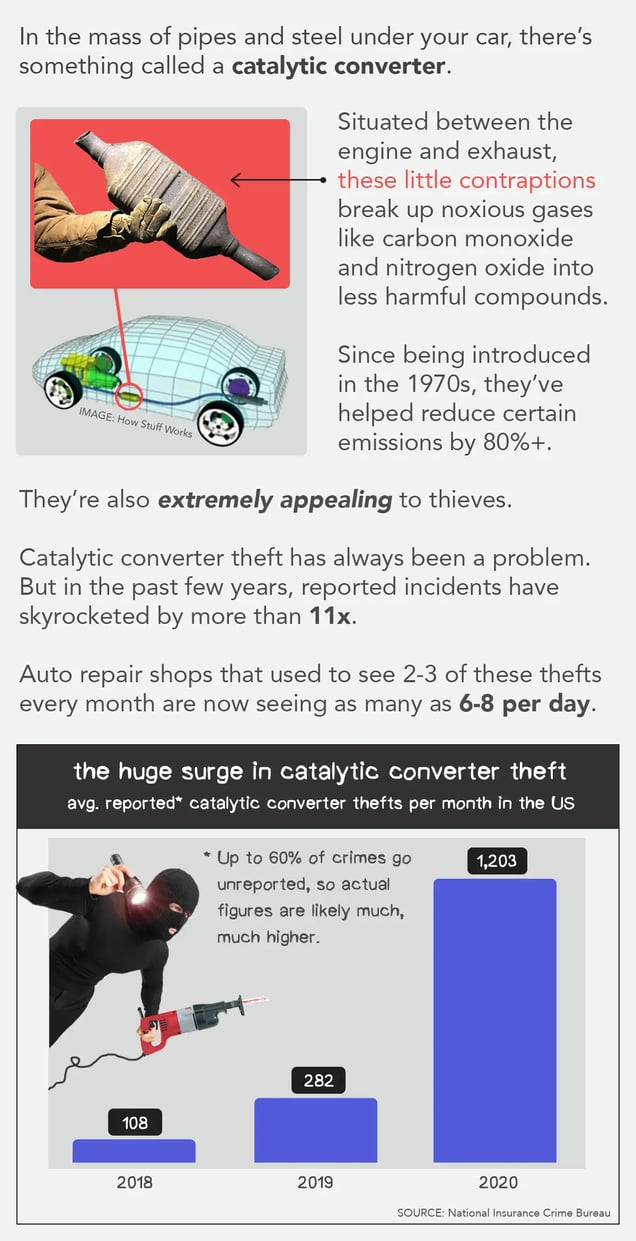
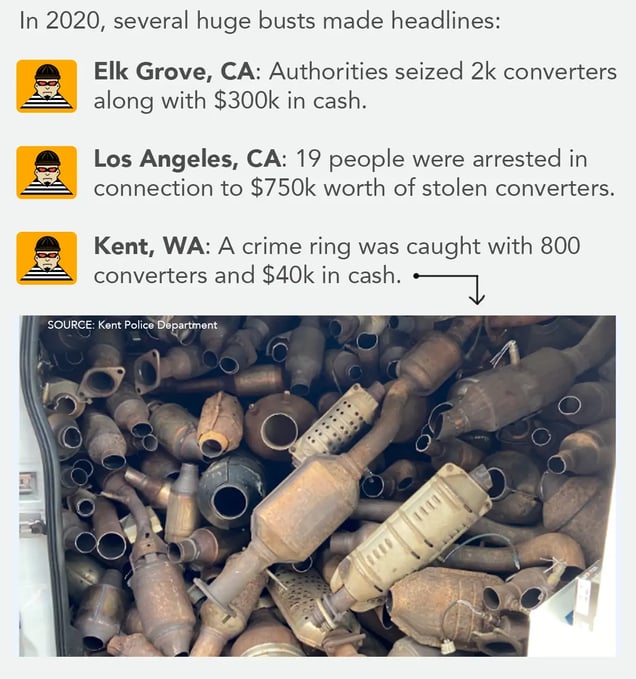
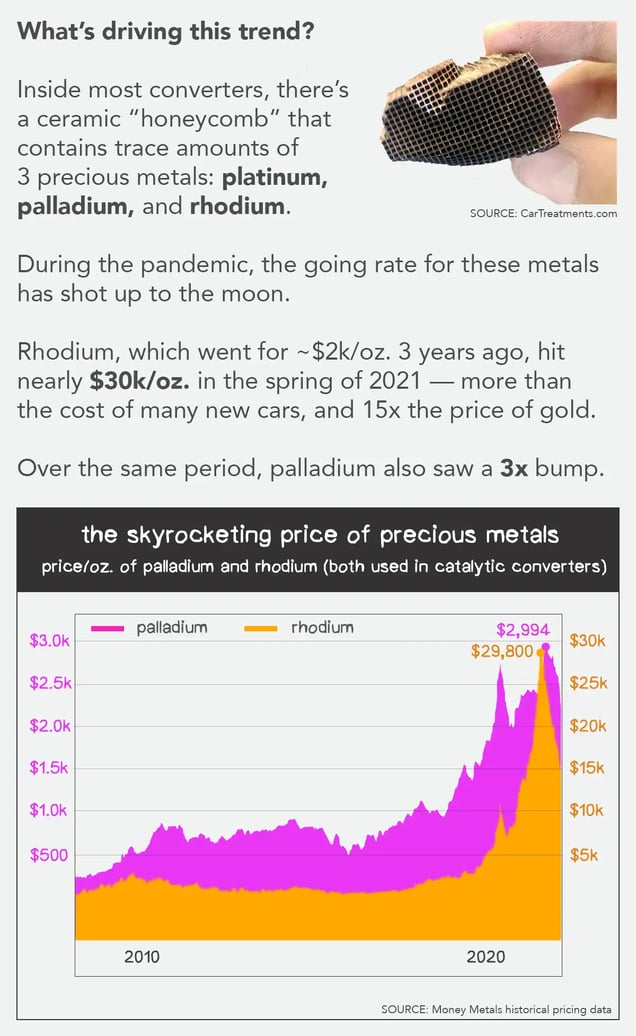
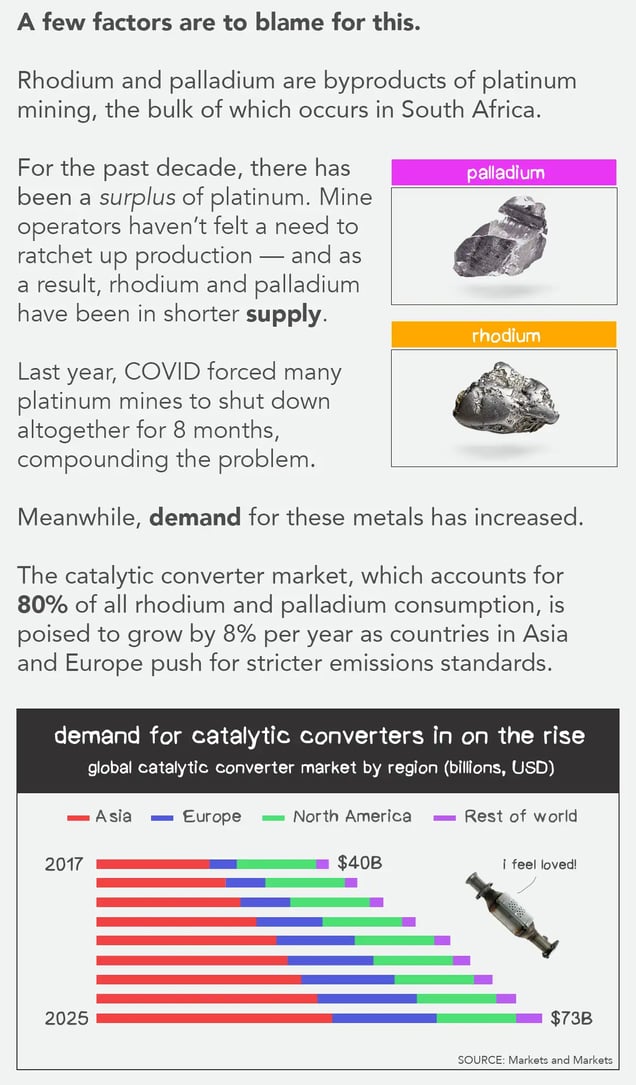
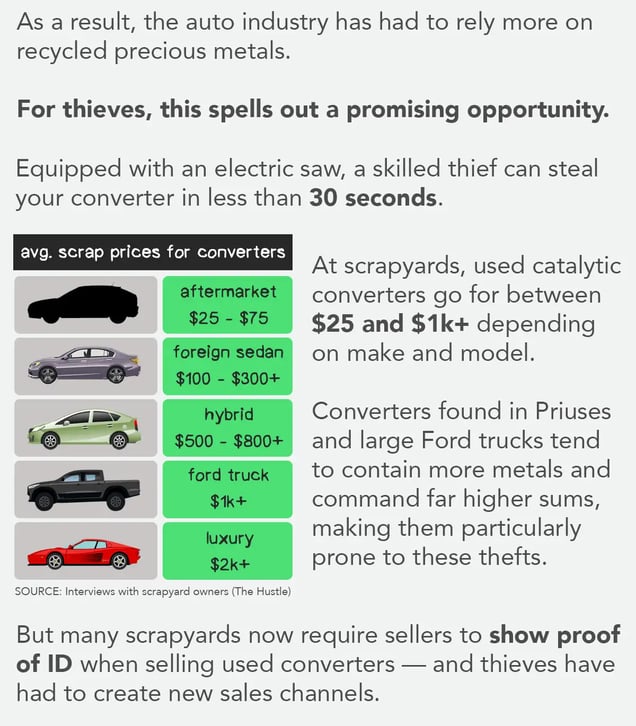
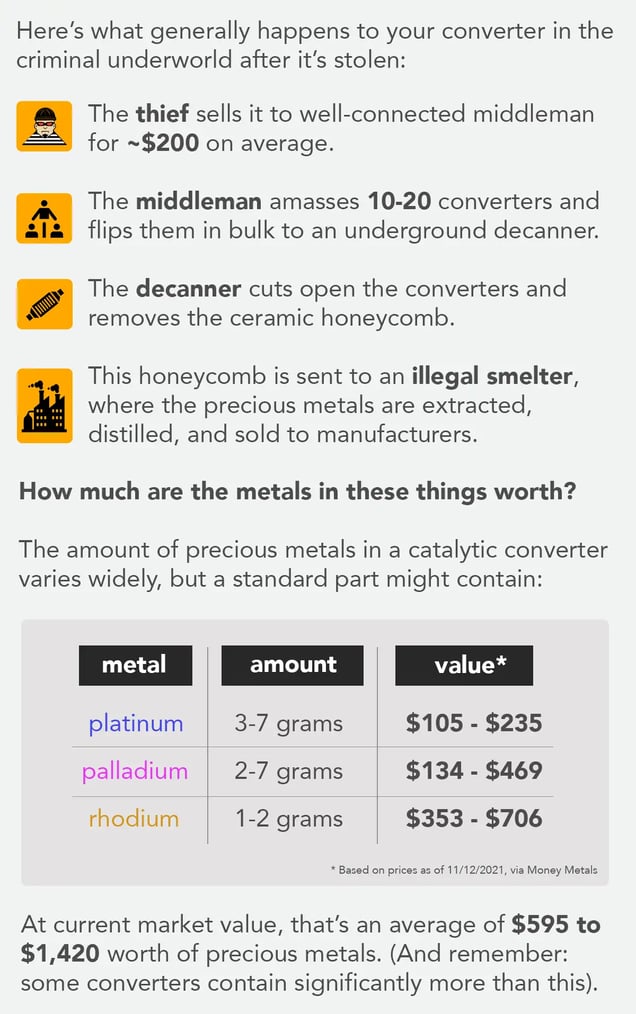
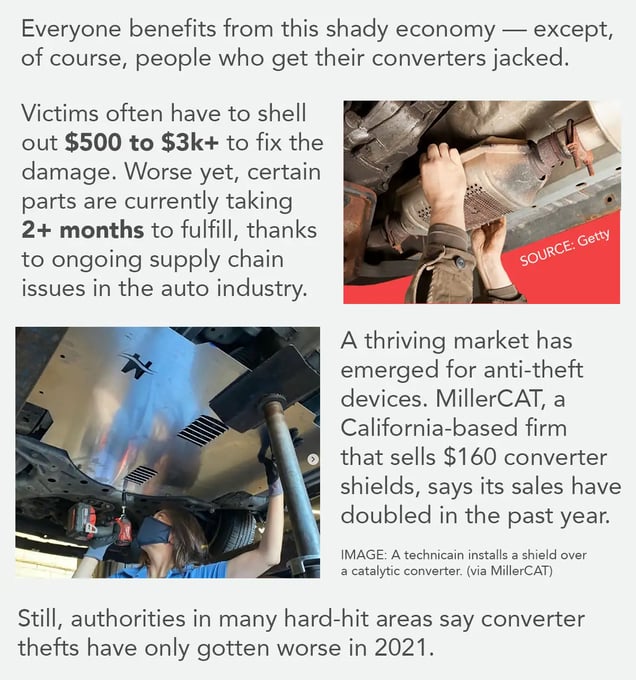
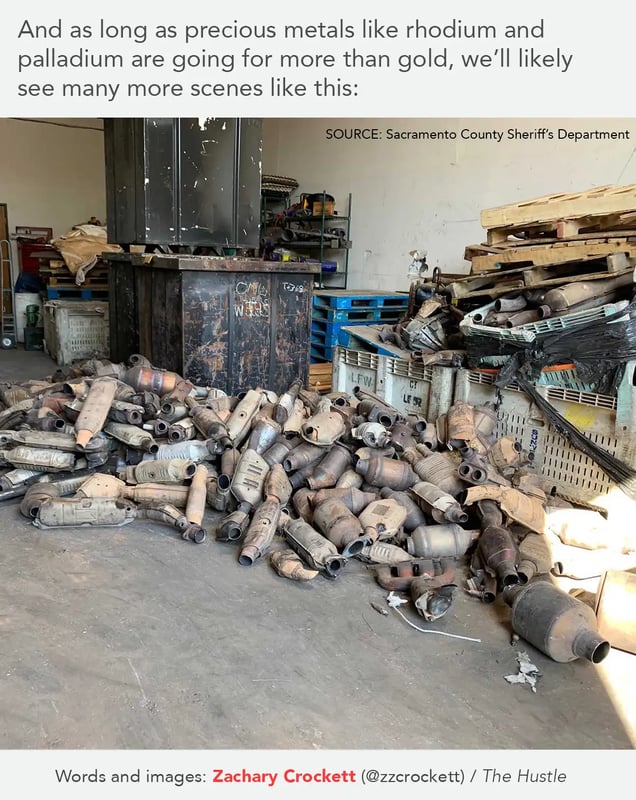
In the mass of pipes and steel under your car, there’s something called a catalytic converter.

Situated between the engine and exhaust, these little contraptions break up noxious gases like carbon monoxide and nitrogen oxide into less harmful compounds.
Since being introduced in the 1970s, they’ve helped reduce certain emissions by 80%+.
They’re also extremely appealing to thieves.
Catalytic converter theft has always been a problem. But in the past few years, reported incidents have skyrocketed by more than 11x.
Auto repair shops that used to see 2-3 of these thefts every month are now seeing as many as 6-8 per day.
In 2020, several huge busts made headlines:
- Elk Grove, CA: Authorities seized 2k converters along with $300k in cash.
- Los Angeles, CA: 19 people were arrested in connection to $750k worth of stolen converters.
- Kent, WA: A crime ring was caught with 800 converters and $40k in cash.
What’s driving this trend?
Inside most converters, there’s a ceramic “honeycomb” that contains trace amounts of 3 precious metals: platinum, palladium, and rhodium.
During the pandemic, the going rate for these metals has shot up to the moon.
Rhodium, which went for ~$2k/oz. 3 years ago, hit nearly $30k/oz. in the spring of 2021 — more than the cost of many new cars, and 15x the price of gold.
Over the same period, palladium also saw a 3x bump.
A few factors are to blame for this.
Rhodium and palladium are byproducts of platinum mining, the bulk of which occurs in South Africa.
For the past decade, there has been a surplus of platinum. Mine operators haven’t felt a need to ratchet up production — and as a result, rhodium and palladium have been in shorter supply.
Last year, COVID forced many platinum mines to shut down altogether for 8 months, compounding the problem.
Meanwhile, demand for these metals has increased.
The catalytic converter market, which accounts for 80% of all rhodium and palladium consumption, is poised to grow by 8% per year as countries in Asia and Europe push for stricter emissions standards.
As a result, the auto industry has had to rely more on recycled precious metals.
For thieves, this spells out a promising opportunity.
Equipped with an electric saw, a skilled thief can steal your converter in less than 30 seconds.
At scrapyards, used catalytic converters go for between $25 and $1k+ depending on make and model.
Converters found in Priuses and large Ford trucks tend to contain more metals and command far higher sums, making them particularly prone to these thefts.
But many scrapyards now require sellers to show proof of ID when selling used converters — and thieves have had to create new sales channels.
Here’s what generally happens to your converter in the criminal underworld after it’s stolen:
- The thief sells it to a well-connected middleman for ~$200 on average.
- The middleman amasses 10-20 converters and flips them in bulk to an underground decanner.
- The decanner cuts open the converters and removes the ceramic honeycomb.
- This honeycomb is sent to an illegal smelter, where the precious metals are extracted, distilled, and sold to manufacturers.
How much are the metals in these things worth?
The amount of precious metals in a catalytic converter varies widely, but a standard part might contain:
At current market value, that’s an average of $595 to $1,420 worth of precious metals. (And remember: some converters contain significantly more than this).
Everyone benefits from this shady economy — except, of course, people who get their converters jacked.
Victims often have to shell out $500 to $3k+ to fix the damage. Worse yet, certain parts are currently taking 2+ months to fulfill, thanks to ongoing supply chain issues in the auto industry.
A thriving market has emerged for anti-theft devices. MillerCAT, a California-based firm that sells $160 converter shields, says its sales have doubled in the past year.
Still, authorities in many hard-hit areas say converter thefts have only gotten worse in 2021.
And as long as precious metals like rhodium and palladium are going for more than gold, we’ll likely see many more thefts.
